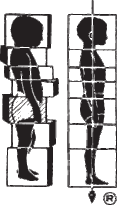Frequently Asked Questions
-
Why a Ten-Series?
The hallmark of Rolfing® Structural Integration is a standardized “recipe” known as the Ten-Series. Its goal is to methodically balance and optimize both the structure (shape) and function (movement) of the entire body over the course of ten Rolfing® sessions. Each session focuses on the obstacles of a particular area in the body all the while maintaining a holistic view of the client’s whole system. Each session also prepares the body for the sessions that come next.
-
Do I have to commit to a Ten-series?
No, you don’t. You are welcome to try a session and see if it resonates with you. However, I would recommend trying the first 3 sessions of the Ten-Series. They are the introductory sessions of the Ten-Series and doing these 3 sessions will give you a really good idea of what receiving a Ten-Series may be like. After experiencing 3 Rolfing® sessions is a good time to re-evaluate whether Rolfing® SI is for you or not.
-
How long are sessions?
Sessions are typically 75 minutes. The time spent with a client differs on their needs and differs from one person to another.
-
What happens in a session?
We’ll spend some time checking in and doing a pre-session body reading. There will be some table work (this is when you get to lie down!). The table work will be followed by some seated back work as a form of integration. We’ll end a session with a post-session body reading, and perhaps I’ll give you an exercise to take home. You may choose to have your before and after photos taken, as well.
-
What should I wear?
Ideally, boxer briefs for men, and panties and a bra for women. Some clients may feel more comfortable wearing running shorts, or a light tank top (instead of a bra), and that would be acceptable, too.
-
Does Rolfing® SI hurt?
Rolfing® SI shouldn’t hurt, however some manipulations may feel more pronounced. The level of sensitivity will depend on the obstacles and the compression that manifest in the tissue of the body. If a client is in great need of work, the manipulations during the session may feel more pronounced. As a practitioner, I communicate with my clients throughout the sessions to make sure that their needs are met. If a manipulation feels too strong for a client, I can change my touch and intervention.
-
What can I expect to feel after a session?
Some sensations can be expected after a session like relief of tension in the body, a boost of energy, or soreness (like the kind after a workout). Some greater ease of movement and breath can also be expected. Some emotions may come up, too. Drink a lot of water after your session and give yourself some time to integrate the work. Integration could be doing an activity like taking a nap or going for a walk.
-
Can a session bring up emotions?
Not necessarily, but it is possible for emotions to come up during a session, before or after a session. A Rolfing® session creates the potential for change in a body’s structure and function, which can have an effect on the whole body. It is completely normal to feel emotions come up, however the purpose of a Rolfing® session isn’t to bring a client to emotional overload. I do my work gently and I keep the line of communication open throughout a session to make sure I’m benefitting a client’s needs. If a client feels emotions arise, I will be at my best to hold space for them.
-
How often should I book a session?
I would recommend doing a session a week during the Ten-Series. If it seems like you would benefit from having more space in between sessions, we can adjust according to your needs.
-
What happens after a Ten-Series?
After the Ten Series a person’s structure will continue to evolve so it is necessary to wait some time before receiving any more bodywork of any sort. There is not a set time for when clients should seek more sessions because each body and person is different and will require different attention. After a client feels ready, they may consult with their practitioner and that time, a client may choose to come back for maintenance work once in a while.
